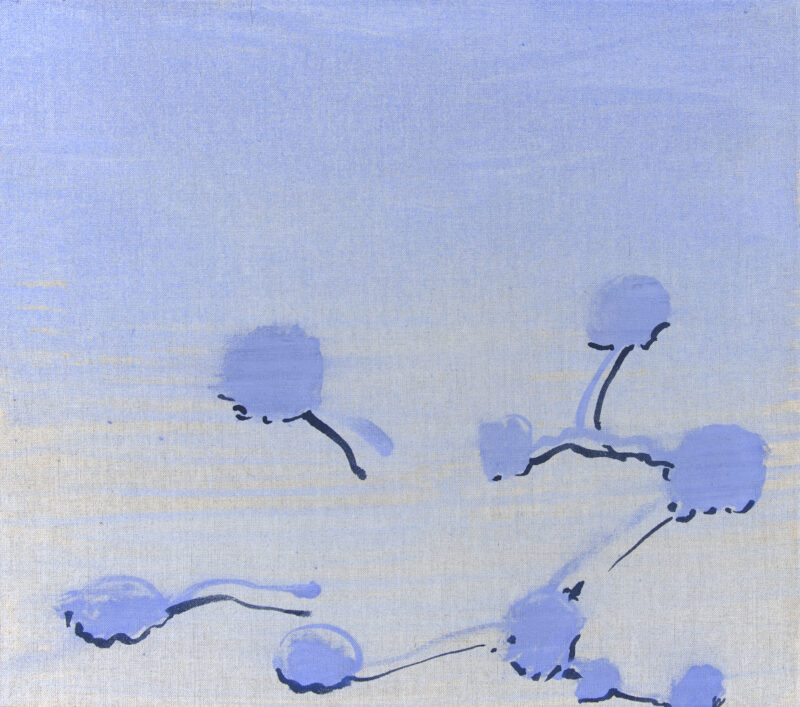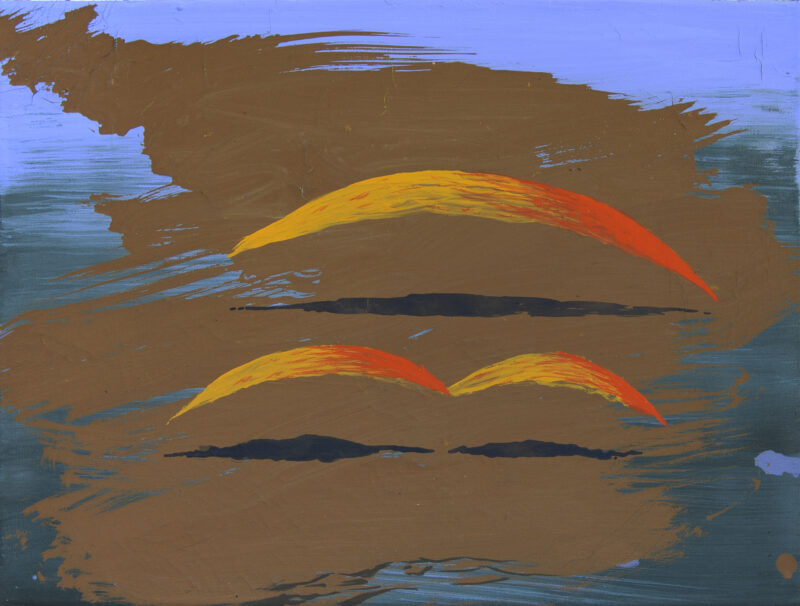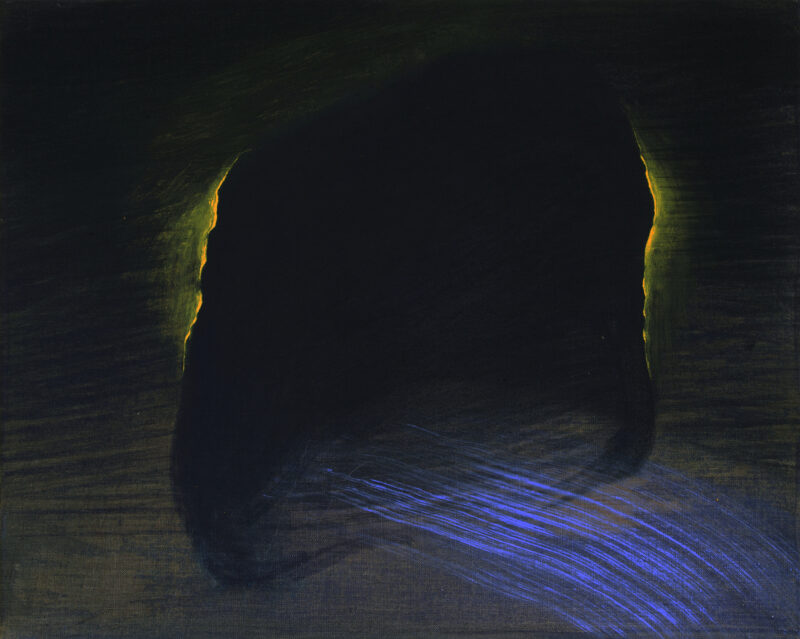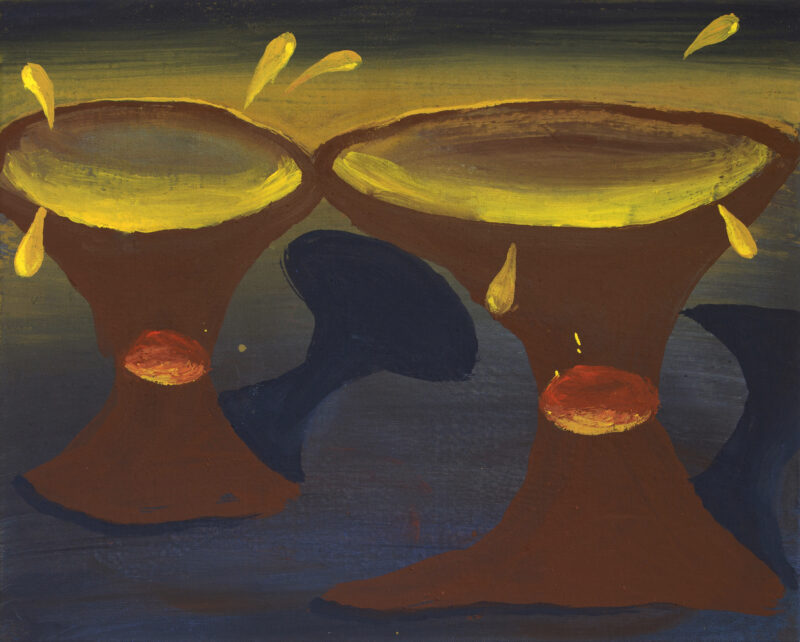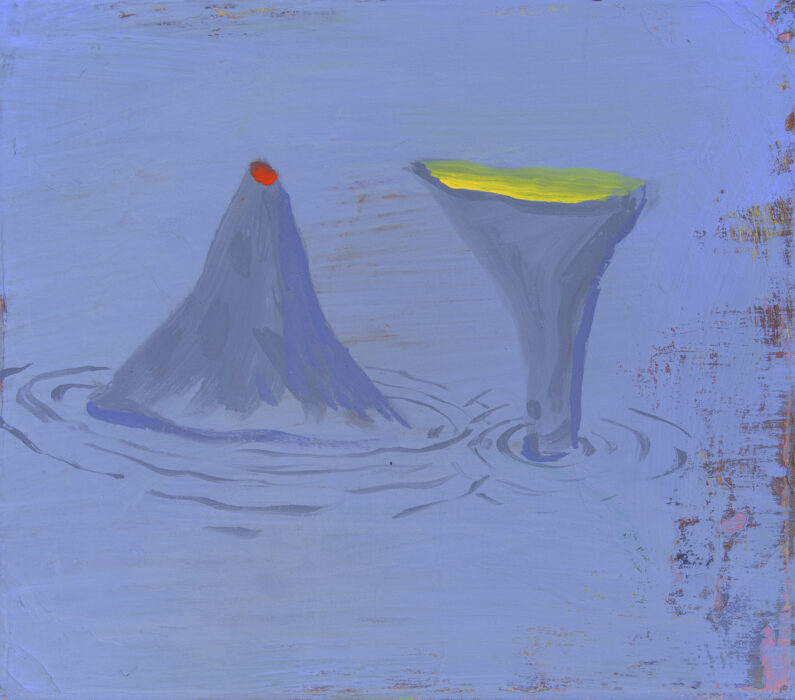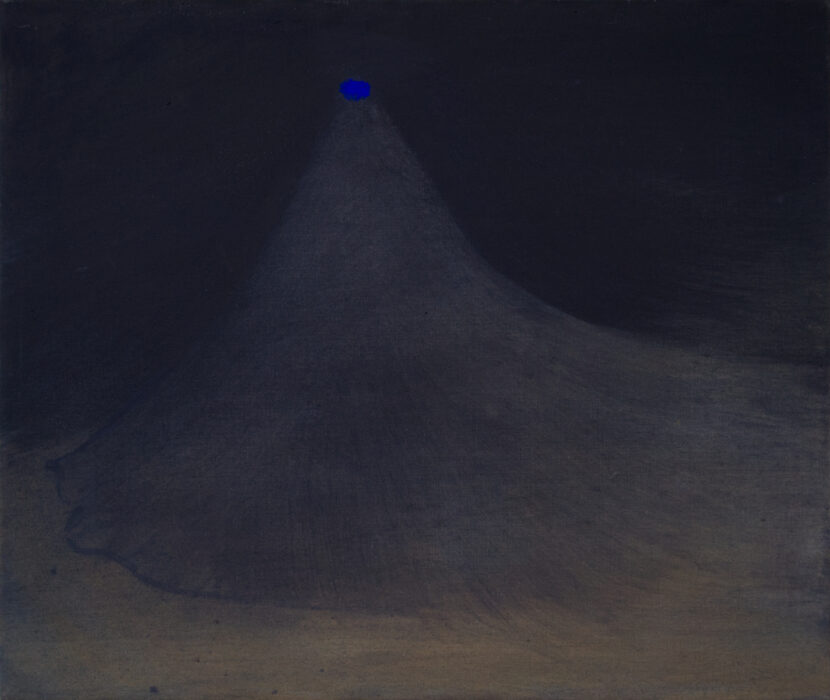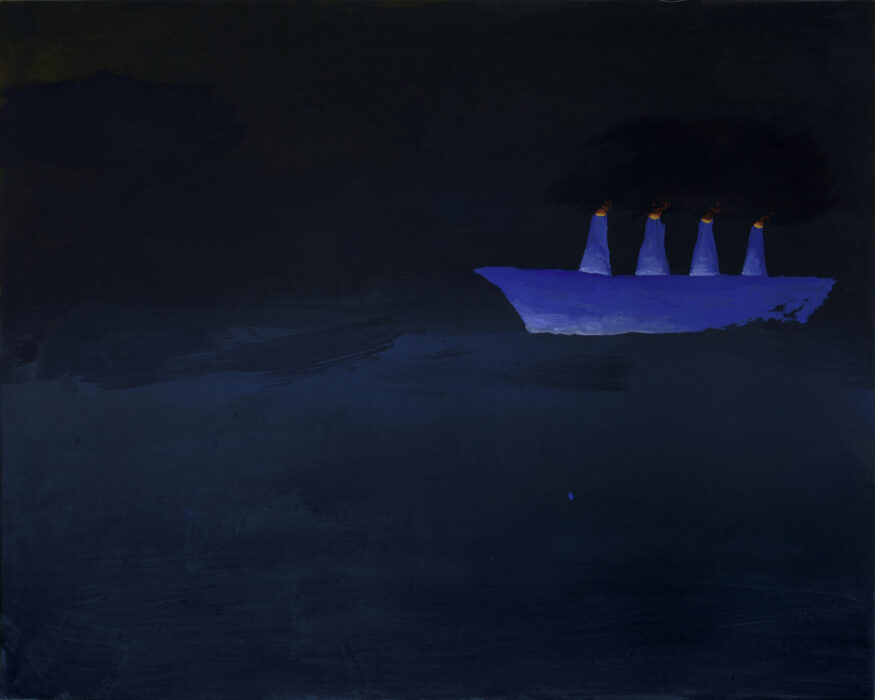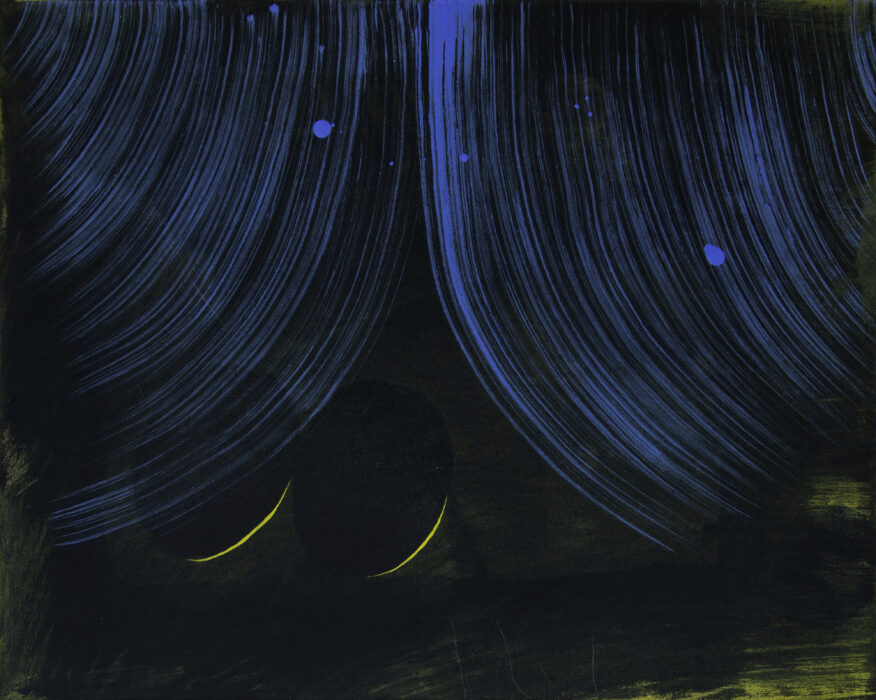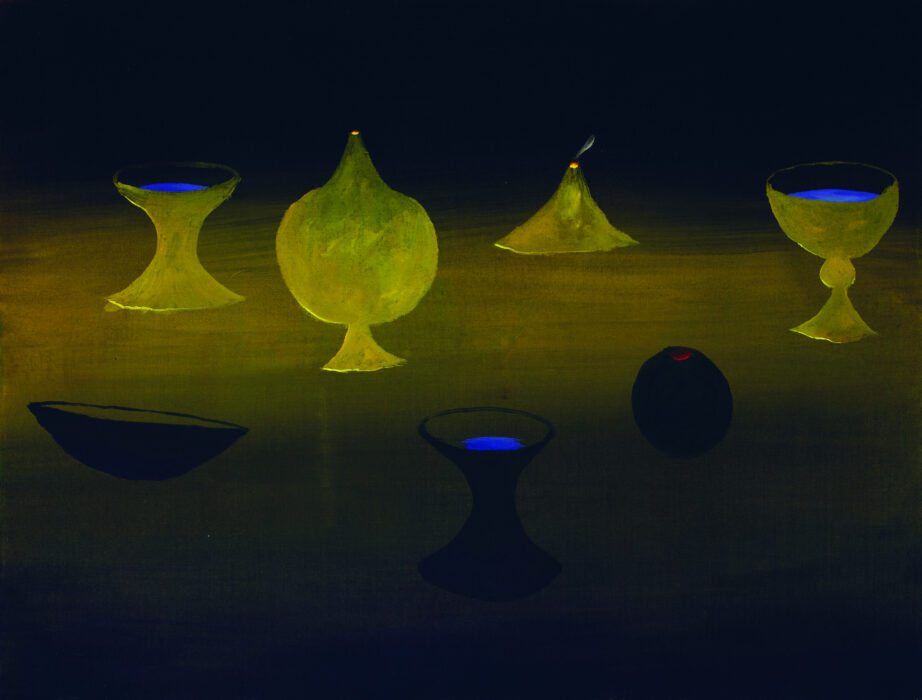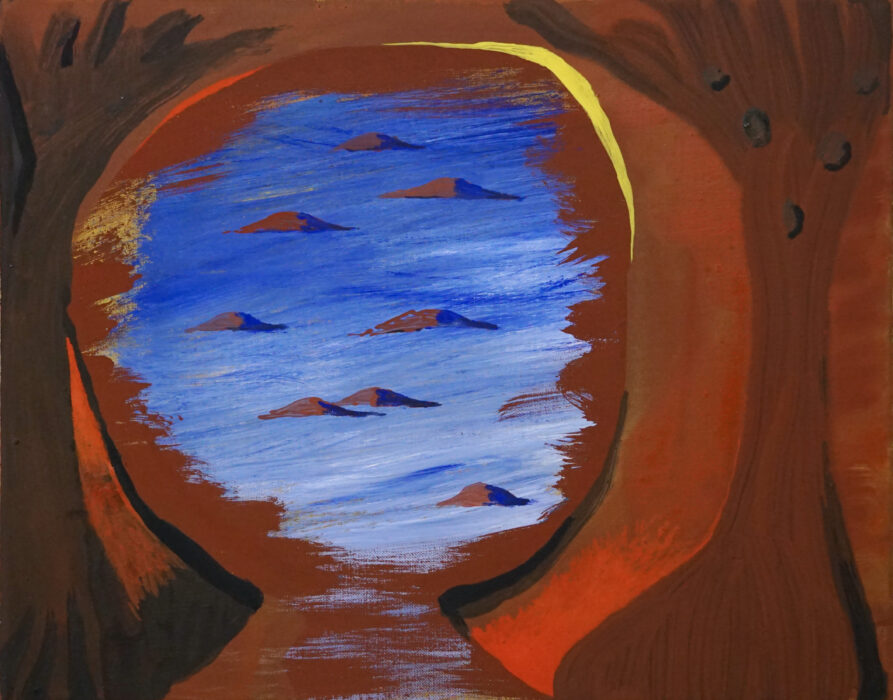Between rock and water, we find the thing that fills, the thing that spills. It is made of clay from the riverbank. Rhythmically, it is constructed, layer upon layer; this edge that separates and thus keeps, that gathers and carries. A cut which births and embraces the void contained within but not completely: there is an opening left, a small disc of sky which connects the in- and the outside, enabling one to pour into the other.
With the passage of time, water evaporates from its pores, and from supple and soft it turns brittle and rigid. Very carefully it is lowered into a pit in the earth, surrounded by many others and covered by hay and thin branches. Flames lick the air and heat the shell until she steams; they heat her until she bakes, heat her until she glows, and heat her until she melts. The earth trembles. She pushes upwards, out of the ash, out of this hellish cauldron. She arcs across the sky, then falls down in a torrid stream, rushing down the black rocky slope. She pounds the mountainsides. She carves canyons, rounds stones. As the incline lessens, so does the current which carries within it the remnants of the places it passed through. Rapids soften, then disappear. Meandering, she twists through the landscape. Eroding and settling: constantly changing, she streams downwards, ever downwards. Other streams pour into her, mix with her, her bed becomes wide and shallow, and her current slow. A new smell, a new taste meets her with a strange tide: salt.
Finally, she flows into that big reservoir. The receptacle of so many others like her. And under the surface of this great expanse, where the ships sail and the clouds arise, the silt she brought with her settles on the seabed, layer upon layer. And these layers slide further into the sea, ever deeper and darker. Devoid of all colour, they then continue into the trench and still keep pressing downwards, into the earth. With the pressure of everything that lies above comes the heat, growing so intense that the seabed itself becomes fluid and flows further still, ever downwards to the innermost where it gathers and stays, until it is time to be poured out anew. To well up again, here or there, on that crust, and spread new veins over the landscape, again and again.
It is here that we encounter them, and into them we dip our jugs, our flasks, and pipes. So as to pour them into us and savour the flavours which they brought from afar. This grit between our teeth – does it contain meaning? Or are we the ones who are containing them? If so, then only temporarily. As with the passage of time they will evaporate from our pores and drift up into the air only to rain down again on some distant mountainside and join the dance once more.
